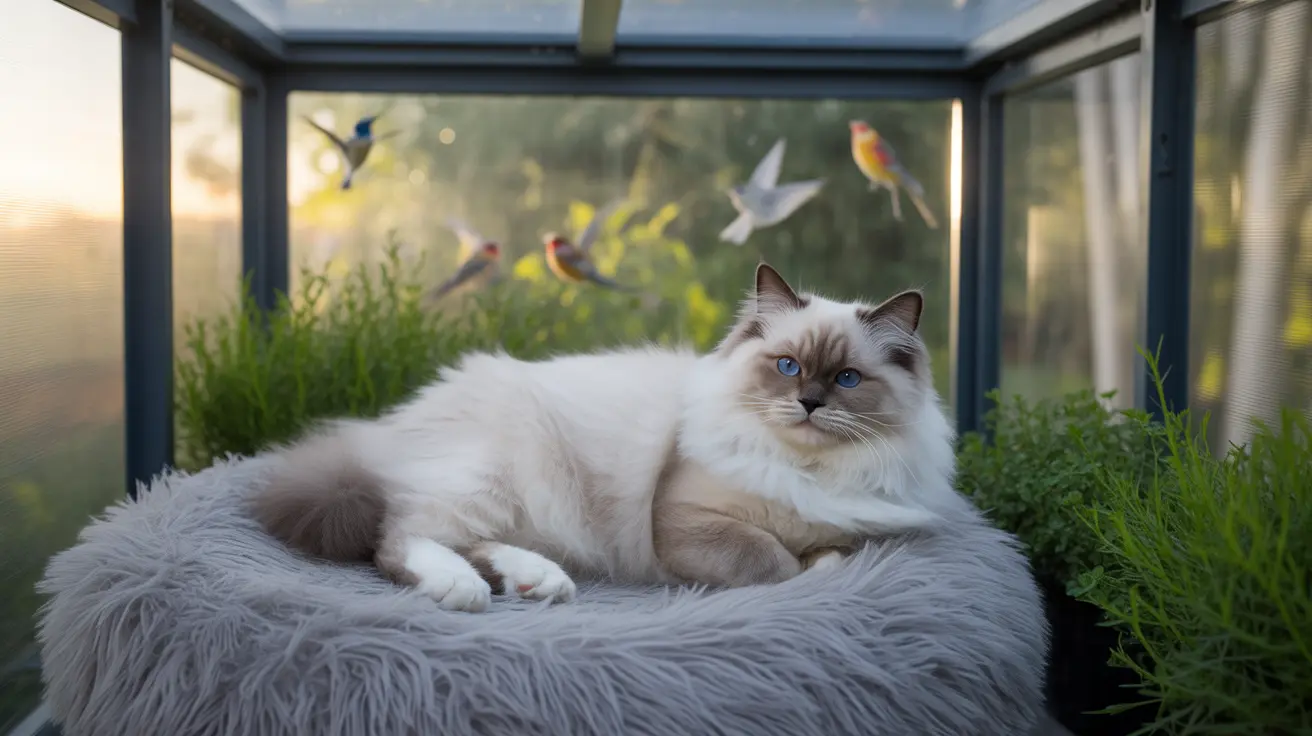If you're a Ragdoll cat owner, you've likely wondered if your feline friend can safely venture outdoors. While these stunning, gentle giants are known for their docile nature and striking blue eyes, their potential for outdoor adventures requires careful consideration. Let's explore whether Ragdoll cats can safely go outside and what precautions you should take to protect these beloved pets.
Understanding the unique characteristics of Ragdolls is crucial when making decisions about outdoor access. These cats are distinctively different from other breeds, with specific traits that make them particularly vulnerable in outdoor environments.
Understanding Ragdoll Cat Temperament and Vulnerabilities
Ragdolls are renowned for their exceptionally gentle and trusting personalities. While these traits make them wonderful indoor companions, they can become serious limitations in outdoor settings. Their tendency to go limp when held – the characteristic that gave them their name – can make them especially vulnerable to predators.
These cats typically weigh between 10-20 pounds and move more slowly than many other breeds, making it difficult for them to escape dangerous situations quickly. Their trusting nature means they lack the natural wariness that helps other cats survive outdoors.
Key Risks of Outdoor Access for Ragdolls
Health Concerns
Outdoor exposure presents numerous health risks for Ragdoll cats, including:
- Increased susceptibility to feline leukemia (FeLV) and feline immunodeficiency virus (FIV)
- Greater risk of parasitic infections from fleas, ticks, and worms
- Exposure to toxic substances like antifreeze or pesticides
- Potential for heat exhaustion due to their thick coats
Safety Risks
The safety concerns for outdoor Ragdolls are significant:
- Higher likelihood of getting lost due to their friendly, trusting nature
- Increased risk of theft, as Ragdolls are valuable and easily approached
- Greater chance of injury from cars, other animals, or falls
- Vulnerability to predators due to their docile temperament
Safe Alternatives for Outdoor Experiences
Catio Solutions
A catio (cat patio) offers the perfect compromise for Ragdolls who show interest in the outdoors. These enclosed spaces provide fresh air and environmental stimulation while maintaining safety. Consider installing a catio that includes:
- Multiple levels for climbing and exploration
- Comfortable resting areas in both sun and shade
- Scratch posts and toys for enrichment
- Secure screening to prevent escape or entry by other animals
Supervised Outdoor Time
If you choose to allow limited outdoor access, always ensure:
- Direct supervision during any outdoor time
- Use of a secure harness and leash designed for cats
- Access to shaded areas and fresh water
- Immediate indoor access if your cat shows signs of stress
Indoor Enrichment Strategies
Creating an engaging indoor environment is crucial for keeping Ragdoll cats happy and healthy. Focus on:
- Installing window perches for safe outdoor viewing
- Providing interactive toys and puzzle feeders
- Creating vertical spaces with cat trees and shelving
- Establishing regular play sessions to maintain physical activity
Frequently Asked Questions
Can Ragdoll cats safely go outside, or should they be kept indoors?
Ragdoll cats are best kept as indoor pets due to their trusting nature and breed-specific vulnerabilities. While supervised outdoor access in secure spaces is possible, unrestricted outdoor access is not recommended for their safety and well-being.
What are the main risks for Ragdoll cats if allowed outdoor access?
The main risks include exposure to diseases, parasites, predators, traffic accidents, and theft. Their trusting nature and lack of strong defensive instincts make them particularly vulnerable outdoors.
How can I let my Ragdoll experience the outdoors safely without letting them roam freely?
Safe outdoor options include secure catios, supervised harness walks, cat strollers, or enclosed balcony spaces. Always ensure these areas are properly secured and your cat is monitored.
Why are Ragdoll cats more vulnerable outdoors compared to other breeds?
Ragdolls are more vulnerable due to their docile temperament, tendency to trust strangers, slower movement, and lack of strong survival instincts. Their size and distinctive appearance also make them targets for theft.
What indoor enrichment options can keep my Ragdoll happy if they can't go outside?
Effective indoor enrichment includes window perches, cat trees, interactive toys, puzzle feeders, regular play sessions, and rotating toys to maintain interest. Many Ragdolls also enjoy water play and training activities.
Conclusion
While Ragdoll cats may show interest in the outdoors, their safety and well-being are best preserved through indoor living with carefully controlled outdoor experiences. By providing proper enrichment and supervised outdoor access through secure means, you can ensure your Ragdoll enjoys a fulfilling, safe, and happy life.






